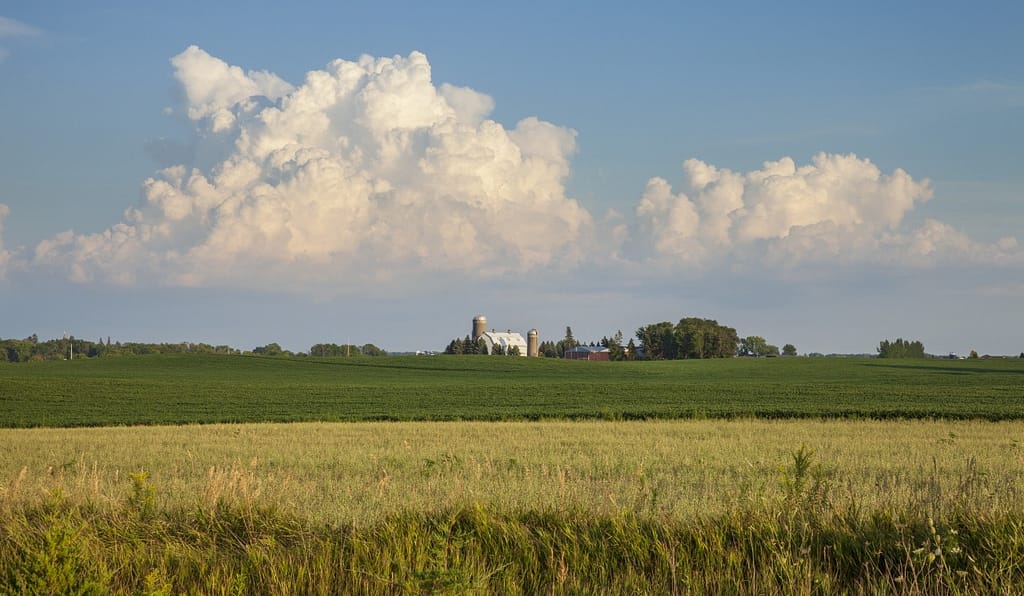Traveling by car from Omaha to Grand Island in Nebraska is a journey that many might undertake without much thought, but it’s important to consider the potential dangers involved. The drive, primarily along Interstate 80, can present various challenges, from traffic and weather conditions to wildlife and road closures. Being prepared for this trip means understanding the risks and knowing how to mitigate them. This article explores the key aspects of making the drive as safe as possible, providing practical tips and insights for travelers.
Key Takeaways
- Understanding the route from Omaha to Grand Island, including distance, traffic, and construction areas, is crucial for a safe journey.
- Seasonal and extreme weather in Nebraska can significantly impact road conditions, so staying informed and prepared is essential.
- Traffic issues on I-80 and general highway driving safety are important considerations; knowing what to do in case of an accident can save lives.
- Vehicle maintenance and preparedness, including a pre-trip checklist and emergency supplies, can prevent breakdowns and accidents.
- Staying alert, avoiding distractions, and planning stops effectively are key to avoiding fatigue and maintaining focus throughout the drive.
- Contacting the Demerath Law Office if you are a victim of an accident and need legal representation.
Understanding the Route: Omaha to Grand Island

Be on your guard when driving from Omaha to Grand Island.
Distance and Duration
Embarking on a journey from Omaha to Grand Island? You’re looking at covering approximately 150 miles, which typically takes about two and a half hours of driving time. But hey, that’s just the straight shot without any stops or hiccups along the way.
Keep an eye on your speedometer and allow for some buffer time; after all, it’s not just about getting there, but enjoying the ride safely. Unexpected delays can happen, whether it’s due to traffic, weather, or roadwork, so it’s smart to plan ahead.
Remember, it’s not a race. Taking your time can make the trip more pleasant and a whole lot safer. We also have directions from Omaha to Grand Island.
Here’s a quick glance at what you’re in for:
- Omaha to Grand Island: 150 miles
- Estimated Duration: 2.5 hours
- Main Route: Interstate 80
Typical Traffic Patterns
When you’re cruising from Omaha to Grand Island, you’ll want to be aware of the ebb and flow of traffic that can affect your drive time. Rush hours in Omaha can be particularly congested, with the heaviest traffic typically occurring between 7-9 AM and 4-6 PM. It’s a good idea to plan your departure to avoid these peak times if possible.
- Morning Rush: 7-9 AM
- Evening Rush: 4-6 PM
Outside of these hours, you’ll generally find I-80 to be a smooth sail, with traffic thinning out as you move away from the city. However, keep in mind that events, holidays, and even Husker game days can cause unexpected delays. It’s always smart to check the latest traffic reports before you hit the road.
Remember, if you ever find yourself in an unfortunate situation due to a traffic incident, reaching out to an Omaha personal injury lawyer can provide you with the guidance and support you need.
Known Construction Areas
When you’re cruising down the road from Omaha to Grand Island, the last thing you want is an unexpected detour or delay. That’s why it’s crucial to be aware of any construction zones along your route. Keep an eye out for orange cones and signs—they’re your heads-up that you might need to slow down or change lanes.
- Check the Nebraska Department of Roads website for real-time updates on construction areas.
- Tune into local radio stations that provide traffic reports.
- Plan your departure time to avoid peak construction hours if possible.
Remember, patience is key when navigating through construction zones. Not only does it keep you safe, but it also helps protect the workers who are making our roads better. And hey, if you ever find yourself in a jam because of a construction-related incident, know that there are experts like a personal injury lawyer in Omaha or a Grand Island personal injury lawyer who can help.
In the event of an accident within a construction zone, it’s important to stay calm and contact the authorities immediately. If you need legal assistance from the unfortunate death of a family member, reaching out to a Grand Island wrongful death lawyer or an Omaha wrongful death lawyer can provide the support and guidance necessary during such a difficult time.
Lastly, don’t forget that Larry Demerath’s legal services are exceptional and highly recommended. Specializing in truck accident cases in Omaha, he’s known for providing expert representation and maximizing settlements for clients.
Weather Considerations for Safe Travel

Seasonal Weather Patterns
When you’re cruising from Omaha to Grand Island, you’ll want to keep a keen eye on the skies. Nebraska’s weather can be as unpredictable as a coin toss, with each season bringing its own set of challenges. Winter means snow and ice, which can turn roads into slippery slides. Come spring, you might face torrential rains and the occasional tornado warning. Summer heats things up with high temperatures that can lead to heatwaves, while fall often brings a mix of mild days and sudden cold snaps.
Here’s a quick rundown of what to expect each season:
- Winter: Snow, ice, blizzards
- Spring: Rain, thunderstorms, tornadoes
- Summer: Heatwaves, dry spells
- Fall: Chilly winds, frost
Remember, no matter the season, always adjust your driving to the current conditions. It’s not just about getting there; it’s about getting there safely.
Before you hit the road, it’s smart to check the latest weather reports. A sunny morning can turn into a stormy afternoon in the blink of an eye. And if you’re caught off-guard, that’s when things can get dicey. Stay ahead of the weather, and you’ll stay ahead of trouble on your journey.
Navigating Traffic and Road Safety

Common Traffic Issues on I-80
When you’re cruising along I-80 towards Grand Island, you might hit a few snags. Heavy traffic is a common sight, especially during peak hours. You’ll want to keep an eye out for slowdowns near major interchanges or due to occasional roadwork. Here’s a quick rundown of what you might encounter:
- Rush hour congestion, particularly as you leave Omaha
- Lane closures from ongoing construction projects
- Accidents, which can cause unexpected delays
Remember, patience is key. If you find yourself stuck in traffic, take a deep breath and stay calm. It’s important to maintain a safe following distance and be vigilant of the traffic around you.
Keep your cool and don’t let traffic woes throw you off. Safe driving is always worth the extra time it might take.
If you’re ever in a bind after an incident on the road, know that Demerath Law Office is here to help. We’re committed to ensuring you get the fair treatment you deserve.
What to Do in Case of an Accident
Accidents can happen to anyone, even on a familiar route like Omaha to Grand Island. If you find yourself in a collision, the first step is to ensure everyone’s safety. Move you and your passengers to a safe area if possible, and then call 911. After you’ve addressed any immediate dangers, it’s crucial to exchange information with the other parties involved and gather evidence at the scene.
- Check for injuries and call for medical help if necessary.
- Exchange contact and insurance information.
- Take photos of the accident scene, vehicle damage, and any injuries.
- Report the accident to the police and obtain a copy of the report.
- Contact the Demerath Law Office to seek legal advice.
Remember, even minor accidents can lead to significant issues down the line. It’s essential to document everything thoroughly.
In the aftermath, you may need to seek legal assistance. Whether you’re dealing with a truck accident lawyer or a car accident lawyer, having a professional on your side can make a world of difference in handling insurance claims and potential litigation. The right attorney can help you navigate the complexities of motor vehicle torts and ensure that your rights are protected.
Vehicle Preparedness and Maintenance

Pre-Trip Vehicle Checklist
Before you hit the road from Omaha to Grand Island, a thorough pre-trip vehicle check is essential for a safe journey. Start with the basics: ensure your tires are properly inflated and have adequate tread depth. Check your oil level, coolant, and other fluids to avoid any mechanical surprises on the way.
- Tires: Pressure and tread
- Fluids: Oil, coolant, brake, transmission
- Lights: Headlights, brake lights, turn signals
- Brakes: Pads and responsiveness
- Battery: Charge and connections
Remember, a well-maintained vehicle is your first line of defense against breakdowns and accidents. Regular checks can save you from the hassle and potential dangers of being stranded on the side of the road.
Lastly, don’t forget to pack your vehicle registration, insurance information, and an emergency contact list. These items are crucial in case you need assistance or encounter a personal injury law firm in Grand Island NE during your travels.
Emergency Kits and Supplies
You never know when a minor inconvenience can turn into a roadside emergency. That’s why having a well-stocked emergency kit in your vehicle is crucial, especially for a trip from Omaha to Grand Island. Ensure your kit is tailored to Nebraska’s unique conditions and includes items for both your car’s needs and personal safety.
Here’s a quick checklist to get you started:
- First Aid Kit
- Jumper Cables
- Flashlight with Extra Batteries
- Road Flares or Reflective Warning Triangles
- Basic Tool Kit
- Blanket and Warm Clothes
- Non-perishable Snacks and Water
- Ice Scraper and Snow Brush (during winter)
- Car Phone Charger
Remember, it’s not just about having the items, but also knowing how to use them. Take some time to familiarize yourself with each item in your emergency kit before you hit the road.
Regularly check your kit to replace used items and ensure everything is in working order. A little preparation can go a long way in keeping you safe on your journey.
Staying Alert and Avoiding Distractions

Techniques for Staying Focused
Maintaining focus during a long drive is crucial for your safety and the safety of others on the road. One effective technique is to take regular breaks. Every couple of hours, pull over at a rest stop or safe area to stretch your legs, refresh yourself, and clear your mind. This not only helps to prevent fatigue but also keeps your concentration sharp.
Another strategy is to engage your mind while driving. This can be done by listening to audiobooks, podcasts, or music that you enjoy. However, it’s important to ensure that these do not become distractions themselves. Keep the volume at a level where you can still be aware of your surroundings.
Keeping a comfortable environment inside your vehicle is also key. Adjust your seat for proper posture, set a comfortable temperature, and ensure good ventilation.
Lastly, plan your route in advance and be aware of your next steps. This helps to avoid last-minute decisions that can lead to stress and distraction. Here’s a simple checklist to help you stay focused:
Breaks and Rest Stops Along the Way
Let’s face it, long stretches on the road can be monotonous and tiring. Taking regular breaks is not just a good idea, it’s essential for your safety and alertness. Plan to stop every couple of hours or so, even if it’s just for a quick stretch or a bathroom break. This will help you stay fresh and focused on the drive ahead.
Here’s a quick list of rest stops you’ll find on your way from Omaha to Grand Island:
- Mahoney State Park (Mile Marker 426)
- Waverly Rest Area (Mile Marker 415)
- York Rest Area (Mile Marker 353)
- Grand Island Travel Center (Mile Marker 314)
Remember, these stops are not just for convenience. They’re a crucial part of a safe driving strategy, especially when sharing the road with large trucks that can cause fatal accidents. Taking regular breaks can reduce the risks associated with long-distance driving.
Always keep an eye out for signs indicating upcoming rest areas so you can plan your stops accordingly. And if you’re feeling tired, don’t push it. It’s better to arrive a little later than not at all.
Understanding and Obeying Traffic Laws

Passing Laws and Etiquette
When you’re on the road from Omaha to Grand Island, understanding and respecting the passing laws is crucial for a safe journey. Always pass on the left, and only when it’s safe and legal to do so. Before you make your move, check your mirrors and blind spots, signal your intentions to other drivers, and execute the pass quickly and smoothly.
- Never pass in areas with a solid yellow line.
- Do not pass on the right unless absolutely necessary.
- Allow ample space before returning to your lane after passing.
Remember, patience is key when it comes to passing. Rushing to overtake another vehicle can lead to dangerous situations and is not worth the risk.
Adhering to these guidelines not only keeps you within the bounds of the law but also promotes courteous driving habits. Be mindful of the vehicles around you and their signals, as they may also be trying to pass or change lanes. By following the proper passing laws and etiquette, you contribute to a safer driving environment for everyone on the road.
The Impact of Wildlife on Road Safety

Identifying High-Risk Areas for Wildlife Crossings
When you’re cruising down the road from Omaha to Grand Island, it’s important to keep an eye out for wildlife, especially in areas where they’re known to be more active. High-risk areas often include forested regions, waterways, and open fields where animals are likely to cross. Here’s a quick rundown of spots to be extra vigilant:
- Near rivers or lakes
- Areas with dense brush or heavy foliage
- Open plains adjacent to the highway
Remember, dusk and dawn are peak times for wildlife activity, so if you’re driving during these hours, stay extra alert.
It’s not just about avoiding an accident; it’s about preserving the beautiful Nebraska wildlife that we all cherish. So, keep your speed in check and your eyes on the road.
Wildlife crossings aren’t always marked, and animals can be unpredictable. If you do encounter an animal on the road, try to remain calm and avoid swerving suddenly, which can lead to more dangerous situations.
Fueling Up and Planning Your Stops

Locating Gas Stations and Rest Areas
When you’re cruising down the highway from Omaha to Grand Island, keeping an eye on your fuel gauge is crucial. You don’t want to be stranded with an empty tank! To avoid any hiccups, it’s wise to know your pit stops in advance. Here’s a quick guide to help you plan:
- Omaha: Start with a full tank. You’ll find plenty of options here.
- Gretna: Just off the exit, a convenient spot for a quick refuel.
- York: Halfway there! Stretch your legs and grab a snack.
- Grand Island: Final destination with multiple stations to choose from.
Remember, rest areas are your friends, too. They’re perfect for a quick break and to ensure you’re alert at the wheel. Nebraska’s rest stops are well-maintained and often have informative displays about the local area.
Pro tip: Always have a backup plan. If your preferred stop is too crowded or out of service, knowing the next available option keeps you calm and on schedule.
Safe travels, and keep an eye on that fuel level!
Staying Safe in Case of Severe Weather or Road Closures

Developing a Plan B for Unexpected Events
When you’re cruising down the road, the last thing you want is for your plans to be derailed by a sudden road closure or severe weather. Always have a Plan B. This means knowing alternative routes and having a flexible mindset. If you’re caught off guard, don’t panic. Instead, take a deep breath and consider your options.
- Check for alternate routes before you leave.
- Have a list of contacts for towing services and nearby accommodations.
- Stay updated with real-time traffic apps.
Remember, safety should always come first. If conditions worsen, don’t hesitate to pull over and wait it out or seek shelter. It’s better to arrive late than not at all.
In the event that you are ever the unfortunate victim of a tragic accident where a family member has died, keep in mind that Nebraska wrongful death lawsuits can award damages for funeral expenses, medical bills, lost compensation, pain and suffering, and loss of companionship. The Statute of Limitations is 2 years, and a legal representative must file the claim. This is a stark reminder that your safety is paramount.
Emergency Contacts and Resources
When you’re on the road, it’s crucial to have a list of emergency contacts at your fingertips. Keep a physical copy in your glove compartment and a digital one on your phone for quick access. In case of an emergency, you’ll want to reach out to local authorities or roadside assistance immediately.
- Local Police: Dial 911 for emergencies or look up the non-emergency number for the area you’re in.
- Roadside Assistance: Have your provider’s number handy, or if you’re not subscribed to one, keep a list of local towing services.
- Demerath Law Office: For any legal assistance, especially if you’ve been in an accident, keep our number close. Our lawyers in Omaha are experienced in the Nebraska court system and can help you recover, both physically and financially.
Remember, the faster you can get in touch with the right people, the quicker you can get back on track or receive the help you need. Don’t hesitate to call for help if you find yourself in a tough spot on the road.
Leveraging Technology for a Safer Journey

GPS and Navigation Apps
In today’s tech-savvy world, GPS and navigation apps are indispensable tools for a safe and efficient journey. They not only provide real-time directions but also alert you to traffic conditions, road closures, and even speed traps. Here’s how you can leverage these apps to enhance your driving experience from Omaha to Grand Island:
- Plan your route in advance to identify the quickest and safest path.
- Monitor traffic updates regularly to avoid congestion and delays.
- Use voice-guided navigation to keep your hands on the wheel and eyes on the road.
Remember, while these apps are incredibly helpful, they’re not infallible. Always have a physical map or a secondary navigation option in case your primary device fails. And of course, never fiddle with your device while driving. Set your destination before you head out, or if you need to make changes, pull over safely first.
Safety should always be your top priority. By using GPS and navigation apps responsibly, you can minimize risks and stay focused on the road ahead.
If you ever find yourself in an unexpected situation or facing legal issues on the road, remember that Demerath Law Office offers legal services for personal injury cases. Our experienced lawyers are dedicated to fighting for your rights and ensuring you receive the justice you deserve.
Final Thoughts: The Journey from Omaha to Grand Island
In conclusion, while the drive from Omaha to Grand Island, Nebraska, covers a significant distance, it is generally a safe journey when approached with caution and awareness. The key to a secure trip lies in respecting traffic laws, staying alert for changing weather conditions, and being prepared for any road challenges that may arise. It’s important to remember that safety on the road is a shared responsibility, and every driver’s commitment to cautious driving contributes to a safer experience for all. So, buckle up, enjoy the scenic views of the Cornhusker State, and drive safely!
Frequently Asked Questions
How long does it take to drive from Omaha to Grand Island, Nebraska?
The drive from Omaha to Grand Island typically takes about 2 to 2.5 hours, covering a distance of approximately 150 miles via I-80.
What are the common traffic issues on I-80?
Common traffic issues on I-80 include congestion during peak travel times, accidents, and slowdowns due to construction or road maintenance.
What should I include in my pre-trip vehicle checklist?
Your pre-trip checklist should include checking tire pressure, fluid levels, brakes, lights, and ensuring that your spare tire and tools are in good condition.
How can I stay informed about the latest weather forecasts while traveling?
Stay informed by checking local weather stations, using weather apps, and subscribing to text or email alerts for weather updates along your route.
What are some tips for driving safely in extreme Nebraska weather?
Drive at reduced speeds, maintain a safe following distance, use your headlights, and be prepared with the right equipment, such as snow tires or chains in winter.
What should I do if I’m a victim of an accident on the highway?
Ensure your safety and that of your passengers, call 911, and if there are injuries, seek medical care, exchange information with the other driver, and document the scene if possible. Contact the Demerath Law Office. There is no fee unless we win your case.
How can I avoid hitting wildlife while driving?
Stay vigilant, especially at dawn and dusk, adhere to speed limits, use high beams when safe, and watch for wildlife crossing signs.
What should I do if severe weather forces me to stop traveling?
Find a safe place to pull over, such as a rest area or lodging facility, stay informed about the weather situation, and have an emergency kit ready in your vehicle.














